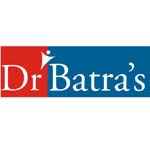Section: Women’s Health
Vitamin D and Women
Posted in Women's Health No discussion yet on July 29th, 2011
Are you experiencing problems like depression, fatigue, weakness, irregularity in sleep cycles and mood swings? If yes, then the factor triggering all these health problems might be a deficiency of vitamin D.
Human body requires vitamin D for helping their body in regulating maintenance and growth of bones and to stabilize secretion of certain hormones. This vitamin is even more important for women, particularly the ones attaining menopause.
How much vitamin D should a woman consume every day depends on the age of the woman. Women, who have not crossed 50 years of age must consume between 400 and 800 international units (IU) vitamin D daily. After crossing 50 years, the body of a woman requires 800-1,000 IU vitamin D every day. In specific cases the physician might recommend consuming vitamin D in higher quantities. According to medical experts, consuming up to 4,000 IU vitamin D daily is safe.
Women must make sure that they are consuming enough vitamin D primarily for preventing the [...]
Female Contraception: Overview of the Birth Control Patches
Posted in Sexual Health, Women's Health No discussion yet on June 24th, 2011
Contraceptives patches can be described as patches stick to the skin of women and release hormones into their bloodstream. These patches possess 3 layers: the protective outer layer made from polyester, the adhesive layer that is medicated and finally the protective liner that needs to be removed before using the patch.
Contraceptive patches are generally applied on the woman’s upper torso (make sure they are not applied on the breasts), outer part of upper arm, abdomen or buttocks. Every patch lasts for 7 days, after which you will need to change it. The two hormone released by these patches are progesterone and estrogen. The hormones penetrate the skin and reach the user’s bloodstream. Like combined birth controlled pills, the contraceptive patches also work by preventing release of egg from the ovaries. The patches make the mucus that surrounds the cervix much thicker, as a result of which the sperm fails to enter the womb. On using the patch, the womb’s lining also becomes thinner [...]
Fibromyalgia Treatment Natural Approaches That Work
Posted in Healthy Living, Women's Health No discussion yet on May 2nd, 2011
Fibromyalgia-triggered chronic pains afflict around one from fifty people in America. As fibromyalgia is incurable & cause for the condition being ambiguous, the pursuit for unearthing the finest fibromyalgia treatment is still under progress. Several individuals have found improvement in their condition via innate therapies – around ninety per cent of fibromyalgia sufferers have given some of them a try. Since there have been hardly any scientific trials done on majority of these natural treatments hence trying them is the sole means of seeing whether any of them are working for you. Do discuss with your physician regarding what may be most apt for you.
Sunshine Vitamin as Fibromyalgia Treatment
Deficits of magnesium & vitamin D have been observed in fibro sufferers; however there is still absence of proof that intake of vitamins in supplemental form is an effectual therapy for fibromyalgia. Vitamin D which is best obtained from the sun’s rays does have some impact on functioning [...]
Pelvic Exam – Is It Necessary to be Done Routinely?
Posted in Women's Health No discussion yet on February 21st, 2011
From all the ignominy that females go through in their lifetime, the regular pelvic exam is definitely among the highly feared ones.
Several females find it humiliating, mortifying, invasively-done procedure & also agonizing for many. The most aggravating part of it all is the constant instruction to be relaxed which actually has the contrary effect.
Presently, a confrontational case has been put forth in the Jan edition of the Journal of Women’s Health that states that among females in good health and not symptomatic due to any condition, a habitually conducted pelvic exam would serve hardly any use - & might be abhorred to such an extent that it deters several females from undergoing usual gynaecologic care.
According to C. Westhoff, Prof. of Obst. & Gynaecology from Columbia Univ. Medical Center who also helmed the trial, non-symptomatic females who feel alright, but yet have to unclothe on exam tables having stirrup & speculums does in no way add any further [...]
Exercising While Pregnant – Handy Advice for All Mothers
Posted in Women's Health No discussion yet on February 18th, 2011
Exercising while pregnant is beneficial to mothers & their babies as it helps in maintaining maternal fitness, strength & keeping body well-toned.
A female who stays active all through gestation is actually making it simpler for herself in adapting to her altering body. The objective here is not weight loss but to maintain optimal fitness level that helps in quickening & easing labor, delivery & recovering thereafter with lesser complication.
Child delivery should be thought to be similar to endurance events wherein more fit one is; more ably one could be coping with the birthing process. However firstly do seek your physician’s approval prior to starting off with any form of exercise. For being on the safer side, enlisting the guidance and assistance of personal trainers is recommended for charting out a fitness program that is specially tailored to the pregnant woman.
Handy Pointers for Exercising During Pregnancy
Hormone vacillations in the body have a tendency [...]
Molar Pregnancy (Hydatidiform Mole)
Posted in Disease & Disorders, Women's Health No discussion yet on February 7th, 2011
Molar pregnancy is a typical accretion or growth forming within the uterine region at the onset of gestation. It is a form of GTD or gestational trophoblastic disease (an assemblage of irregularities wherein tumor growths occur within the uterine region starting in tissue which would usually develop into placenta).
Causes, Risk Factors & Prevalence
Molar pregnancy arises due to overproduction of the tissues which were intended to become the placenta (organ forming during gestation for feeding the fetus). In such a situation, the tissues would be developing into an unusual growth known as mass. Molar pregnancy occurs in duo forms, namely, complete molar pregnancy (presence of irregular placenta in the absence of fetus) & partial molar pregnancy (presence of irregular placenta & some fetal growth). These duo types are the result of fertilization issues for which the precise reason is unknown. But, a dietetic intake less in proteins, vitamin A, & animal fats might don a [...]
Prenatal Vitamins – The Best Health Insurance Ever
Posted in General Health, Women's Health No discussion yet on December 27th, 2010
For optimal maternal-foetal health, so-dubbed prenatal vitamins are recommended during gestation. They are specifically devised multivitamin blends making up for any nutrient deficits in maternal dietetic intake. Even as these supplements have several mineral, vitamin types the contents of iron, folic acid, calcium hold paramount importance.
Why iron, folic acid & calcium is necessary for pregnant females
Folic acid could lower chances of delivering an infant having a grave birth anomaly affecting brains, spinal cord known as neural tube with spina bifida being the highly pervasive neural tube flaw wherein innately improper closure of the spine occurs. The nerves that face exposure as a result of this suffer damage which leaves the kid with differing extent of paralysis, becomes incontinent & at times even mentally retarded.
Development of neural tube flaws is noted in the initial twenty-eight days after getting pregnant; before several females even comprehend they have [...]
Dr. Batra’s Homeopathy is Safe & Effective in PCOS
Posted in Women's Health No discussion yet on November 18th, 2010
A woman is a born multi-tasker — mother, homemaker, wife and professional. She steps into any of these roles effortlessly; she also attends to everyone's needs in the family. Well, in order to perform her duties, she tends to sometimes neglect her own health and well-being.
Women's disorders are soaring at an alarming rate, today — they range from simple menstrual disturbances and infertility to malignancies.
A frequently encountered complaint now on the rise is polycystic ovarian syndrome (PCOS).
Many women, who have PCOS have limited success in treating the problem through conventional medication.
PCOS is the leading cause of infertility; it is also the most common hormonal disorder among women of reproductive age. It affects about 5 per cent of all women.
Coping with complexity
Coping with PCOS is complicated; it is also a painful challenge. From the many embarrassing symptoms to difficulty in conceiving, women with PCOS often feel that they are all alone.
Hormonal changes [...]
Hysterosalpingogram – When is it necessary?
Posted in Women's Health No discussion yet on April 21st, 2010
Hysterosalpingogram or HSG is a diagnostic X-ray test done for looking within the uterus, fallopian tubes and the adjoining areas. The test is mostly conducted in women that have had an unsuccessful time trying to conceive and facing likely infertility issues.
When hysterosalpingogram is performed, a contrasting material or dye is administered via a fine tube passing through the vaginal region and into the uterus. The dye would pass into the fallopian tubes due to it being connected to the uterus. Images are captured employing a steady shaft of X-ray or fluoroscopy with the dye passing via the uterus and in the fallopian tubes. The images could reveal issues like any form of injuries or irregular structural appearance of fallopian tubes or uterus, or any type of obstruction that is impeding egg movement via a fallopian tube to the uterus. Blockages or any form of obstruction could thwart sperm movement inside the fallopian tubes and merging with the egg which is critical to fertilization.
A [...]
An Overview of Breast Cancer Causes
Posted in Cancer, Disease & Disorders, Women's Health No discussion yet on April 15th, 2010
Though exact breast cancer causes continue to be fuzzy, but key risk factors are clear. Yet astonishingly, several females thought to be at high risk of developing breast cancer do not develop the disease whereas several other women that have no identified risk factors get the disease. Amongst the most important risk factors are progressing age and family case history of the disease. Risk would augment to some extent in case of women that had developed a non-malignant lump in their ovaries or breast tissues.
A woman having a direct family history or first degree blood relatives like sibling, offspring or mother that has the disease could raise her chances of developing breast cancer by two to three folds. Investigators have been able to detect duo genes that are accountable for a number of cases of breast cancer running in families – known as the BRCA1 and BRCA2. Nearly 1 female in two hundred is believed to be a carrier of these genes. Women who have the gene are predisposed to developing [...]













